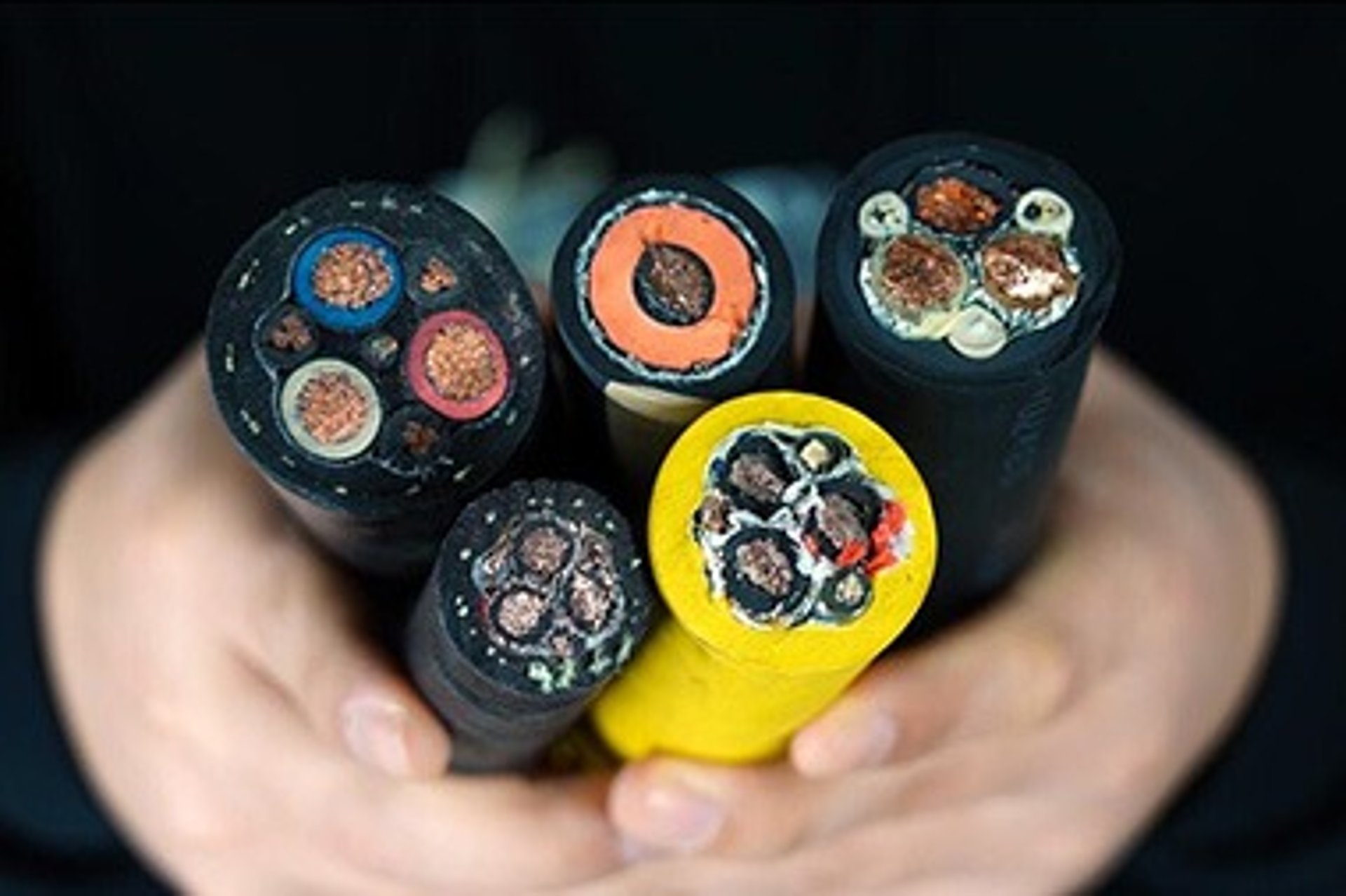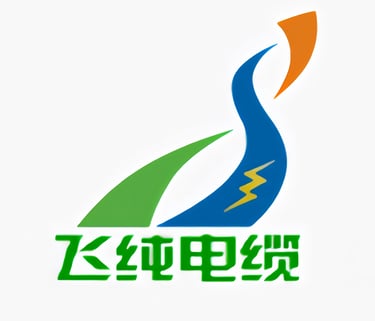Anhui Feichun Special Cable Co.,Ltd Li.wang@feichuncables.com
SANS Type 66 and Type 66 ECC 3.8/6.6 KV Cables: Powering Heavy-Duty South African Mining
Discover the SANS Type 66 and Type 66 ECC 3.8/6.6kV cables, engineered for heavy-duty South African mining. Learn about their technical features, applications, regulatory compliance, and how to choose the right cable for open-pit and underground operations.
Li.wang@Feichun Cable
7/7/20257 min read
South Africa’s mining industry, a pillar of the nation’s economy, operates in some of the most challenging environments on the planet. From the sun-baked open-pit mines of the Northern Cape to the sweltering, kilometer-deep shafts of the Witwatersrand Basin, reliable power delivery is critical to keeping operations running smoothly and safely. At the heart of this infrastructure are the SANS Type 66 and Type 66 ECC (Earth Continuity Conductor) 3.8/6.6kV cables, designed to meet the rigorous demands of heavy-duty mining. These high-voltage trailing cables, compliant with South African National Standards (SANS) and approved by the National Regulator for Compulsory Specifications (NRCS), are engineered to withstand extreme mechanical, thermal, and chemical stresses while ensuring worker safety and operational efficiency.
For South African miners, engineers, and procurement managers, selecting the right cable is a high-stakes decision that impacts productivity, safety, and compliance. The Type 66 and Type 66 ECC cables, rated for 3.8/6.6kV applications, are tailored to power heavy machinery in both open-pit and underground mines, offering flexibility, durability, and advanced safety features. This article explores the design and applications of these cables, their technical advantages, regulatory compliance, and how to choose between them. Whether you’re a mining professional seeking reliable solutions or curious about the technology driving South Africa’s mining legacy, this guide provides a comprehensive look at these essential cables, addressing key questions and needs with clarity and depth.
What is SANS Type 66 and Type 66 ECC Cable?
The SANS Type 66 and Type 66 ECC cables are high-voltage, flexible trailing cables designed for heavy-duty mining applications, standardized under SANS 1520-1. Rated for 3.8/6.6kV, these cables are built to power mobile equipment and fixed installations in South Africa’s open-pit and underground mines. While both share similar core designs, the Type 66 ECC includes an additional Earth Continuity Conductor, enhancing safety in high-risk environments.
Type 66 Cable
Purpose: A flexible, high-voltage trailing cable for powering mobile mining equipment, such as drills, loaders, and shuttle cars.
Construction:
Conductors: High-conductivity tinned copper for efficient power transmission and corrosion resistance.
Insulation: Ethylene propylene rubber (EPR) for excellent thermal and electrical properties, capable of handling 3.8/6.6kV loads.
Sheathing: Chlorosulfonated polyethylene (CSPE) or polyurethane for resistance to abrasion, chemicals, and moisture.
Armouring: Steel wire braiding or tape for mechanical protection against crushing and impact.
Screening: Metallic screens to minimize electromagnetic interference, ensuring reliable signal transmission.
Type 66 ECC Cable
Purpose: An enhanced version of the Type 66, incorporating an Earth Continuity Conductor forbliafor added safety in hazardous mining environments.
Key Difference: Includes an additional earth conductor to provide a continuous grounding path, reducing the risk of electrical faults and enhancing worker safety.
Construction: Similar to Type 66 but with an integrated ECC, often featuring a pilot conductor for monitoring earth continuity.
Why 3.8/6.6 KV?
The 3.8/6.6kV rating allows these cables to handle high-power loads required by heavy mining equipment, such as large-scale drills and pumps, while maintaining flexibility for trailing applications. Their robust design ensures durability in South Africa’s harsh mining conditions.
Key Applications in South African Mining
South Africa’s diverse mining landscape, encompassing open-pit diamond, coal, and iron ore mines, as well as deep underground gold and platinum operations, relies heavily on Type 66 and Type 66 ECC cables. These cables are tailored to meet the unique demands of both environments.
Open-Pit Mining
Open-pit mines, such as those in the Northern Cape’s diamond fields or the iron ore operations in Sishen, face intense environmental challenges, including UV radiation, dust, and heavy machinery. Type 66 and Type 66 ECC cables are used in:
Mobile Equipment: Powering draglines, excavators, and haul trucks, where flexibility and abrasion resistance are critical for constant movement over rugged terrain.
Conveyor Systems: Delivering high-voltage power to long-distance conveyor belts, enduring abrasive dust and mechanical stress.
Pumping Systems: Supporting water management systems to prevent flooding, with sheathing resistant to moisture and chemical runoff.
Underground Mining
In underground mines like Mponeng or Rustenburg’s platinum mines, cables must withstand extreme depths, heat, and confined spaces. Applications include:
Drilling and Cutting: Supplying 3.8/6.6kV power to electrohydraulic drills and continuous miners, requiring flexibility in narrow stopes.
Ventilation Systems: Powering fans to maintain air quality in high-temperature, humid environments.
Communication and Control: Supporting signal transmission for gas detection and emergency systems, with ECC cables ensuring reliable grounding.
Case Studies
Kloof Gold Mine: Type 66 ECC cables power deep-level drilling equipment, with the ECC ensuring safety in methane-prone areas.
Sishen Iron Ore Mine: Type 66 cables support massive haul trucks, resisting UV degradation and abrasive dust in open-pit conditions.
The high-voltage capacity and durability of these cables make them indispensable across South Africa’s mining sector.
Technical Features and Benefits
Type 66 and Type 66 ECC cables are engineered to deliver exceptional performance in South Africa’s mining environments. Their key features and benefits include:
High-Voltage Capability: Rated at 3.8/6.6kV, these cables power heavy machinery, ensuring efficient energy delivery for large-scale operations.
Flexibility: Designed as trailing cables, they can bend and twist repeatedly without damage, ideal for mobile equipment in confined or rugged spaces.
Mechanical Strength: Steel wire or tape armouring protects against crushing, impact, and abrasion from heavy machinery and rocky terrain.
Thermal Resistance: EPR insulation withstands temperatures exceeding 90°C, critical for deep underground mines with high ambient heat.
Chemical and Moisture Resistance: CSPE or polyurethane sheathing resists acid mine drainage (AMD), common in gold and uranium mines, and groundwater seepage.
Flame Retardancy: Compliant with SANS 10139, these cables use low-smoke, zero-halogen (LSZH) materials to minimize fire risks and toxic emissions in confined spaces.
Electrical Safety: High dielectric strength prevents insulation breakdown, while Type 66 ECC’s earth conductor enhances grounding, reducing arc flash risks.
UV Resistance: In open-pit mines, the cables withstand prolonged sunlight exposure without sheath degradation.
Electromagnetic Screening: Metallic screens ensure reliable signal transmission for control systems, critical for monitoring and communication.
Customizability: Available in various conductor sizes and sheath materials to meet specific mine requirements, such as enhanced AMD resistance.
Benefits
Reliability: Reduces downtime and maintenance costs by withstanding harsh conditions.
Safety: Flame-retardant and ECC features enhance worker safety in hazardous environments.
Efficiency: High-voltage capacity supports large equipment, optimizing productivity.
Versatility: Suitable for both open-pit and underground applications, from powering drills to ventilation systems.
These features make Type 66 and Type 66 ECC cables a top choice for South African miners seeking durability and safety.
Compliance with South African Regulations
South Africa’s mining industry operates under strict regulatory oversight to ensure safety and reliability. Type 66 and Type 66 ECC cables comply with the South African National Standards (SANS) and NRCS regulations, guaranteeing performance and safety.
SANS Standards
SANS 1520-1: Specifies requirements for flexible trailing cables, ensuring Type 66 and Type 66 ECC cables meet standards for flexibility, electrical safety, and durability.
SANS 10139: Mandates flame-retardant properties, critical for underground mines where fire risks are high.
SANS 628: Influences armoured cable designs, ensuring mechanical protection for high-voltage applications.
NRCS Regulations
The NRCS enforces mandatory specifications for electrical products:
Approval Process: Type 66 and Type 66 ECC cables must be tested in SANAS-accredited laboratories to verify compliance with SANS standards.
SABS Permit Scheme: Manufacturers and importers require permits for traceability and quality control.
Safety Focus: Regulations prioritize worker safety and environmental protection, requiring cables to withstand hazardous conditions without failure.
Compliance Challenges
Manufacturers must conduct rigorous testing, including:
Abrasion Tests: Simulating dragging over rough terrain.
Thermal Cycling: Ensuring performance in high-temperature environments.
Flame Tests: Verifying fire resistance and low smoke emissions. Non-compliance results in confiscation, fines, or operational shutdowns.
Benefits of Compliance
Safety Assurance: Reduces risks of electrical faults and fires.
Operational Continuity: Minimizes downtime due to cable failures.
Legal Protection: Ensures adherence to South African laws, avoiding penalties.
Choosing Between Type 66 and Type 66 ECC
Selecting between Type 66 and Type 66 ECC cables depends on the specific needs of a mining operation. Here’s a guide to help South African miners make informed decisions:
Type 66 Cable
Best For: Applications where standard grounding is sufficient, such as open-pit mines with lower electrical fault risks.
Advantages:
Slightly lighter and more flexible due to fewer conductors.
Cost-effective for less hazardous environments.
Ideal for mobile equipment like haul trucks and conveyors.
Limitations: Lacks the additional earth continuity conductor, which may be critical in high-risk areas.
Type 66 ECC Cable
Best For: High-risk environments, such as deep underground mines with methane or electrical fault hazards.
Advantages:
Enhanced safety with continuous grounding via the ECC, reducing arc flash risks.
Includes a pilot conductor for monitoring earth continuity, ensuring rapid fault detection.
Preferred for critical systems like ventilation and emergency communication.
Limitations: Slightly heavier and more expensive due to additional conductors.
Decision Factors
Safety Requirements: In methane-prone underground mines (e.g., Witwatersrand gold mines), Type 66 ECC is preferred for its grounding capabilities.
Environmental Conditions: Open-pit mines with less electrical risk may opt for Type 66 for cost savings and flexibility.
Equipment Needs: High-voltage equipment requiring robust grounding benefits from Type 66 ECC.
Budget: Type 66 is more budget-friendly for less demanding applications.
Regulatory Compliance: Both cables meet SANS and NRCS standards, but Type 66 ECC may be mandated in high-risk zones.
Practical Example
Mponeng Gold Mine: Uses Type 66 ECC for deep-level drilling in methane-rich areas, ensuring safety and compliance.
Kolomela Iron Ore Mine: Employs Type 66 for haul trucks in open-pit operations, where flexibility and cost are prioritized.
Consulting with cable manufacturers and conducting site-specific assessments ensures the right choice for each mine’s unique conditions.
Conclusion
The SANS Type 66 and Type 66 ECC 3.8/6.6kV cables are vital to South Africa’s mining industry, powering heavy-duty equipment in the harshest open-pit and underground environments. Their high-voltage capacity, flexibility, and robust features—such as thermal resistance, chemical durability, and flame retardancy—make them ideal for the diverse challenges of South African mines, from the Northern Cape’s iron ore fields to the Witwatersrand’s gold reefs. Compliance with SANS and NRCS standards ensures safety and reliability, while the choice between Type 66 and Type 66 ECC allows miners to tailor solutions to specific needs, balancing safety, cost, and performance.
For South African mining professionals, these cables offer a blend of cutting-edge technology and regulatory adherence, supporting efficient and safe operations. As the industry evolves with mechanization and sustainable practices, Type 66 and Type 66 ECC cables will continue to play a critical role in powering South Africa’s mining future. Whether you’re sourcing equipment or exploring the technology behind the nation’s mines, understanding these cables’ features, applications, and compliance ensures informed decisions that enhance productivity and safety in one of the world’s toughest industries.



Email Address: Li.wang@feichuncables.com
© 2025. All rights reserved.


One-click to Quickly Contact
Products
Offshore & Marine Cable
XLPE Cable
Contact
Company
Location:
Building A Private Science and Technology Park, Hefei Economic and Technological Development Zone, Anhui Province, China
